Sustainability Tours
Our campus is a thriving, living laboratory dedicated to sustainability in action. Come and discover how we bring sustainability to life on campus through our campus tours.
Environmental Sustainability Campus Tour
We have received numerous accolades for our commitment to green practices, evident in the innovative features and thoughtful elements integrated into our buildings and landscapes that help to conserve resources, reduce climate change impacts and improve wellbeing. Go on the Environmental Sustainability Tour and experience our green features, from the rooftop solar farm to vertical gardens and underground rainwater harvesting tanks. Take the virtual tour below or go on a self-guided walking tour and get to know our campus better!
Keen to find out more about the features of our Zero Energy and Super Low Energy buildings? The Office of Campus Infrastructure and Services conducts guided group tours for organisations that typically take about 3 hours covering SMU Connexion and the School of Social Sciences and College of Integrative Studies building. Contact the Office of Infrastructure and Services (OCIS) at ocis@smu.edu.sg for more information on the guided tour.
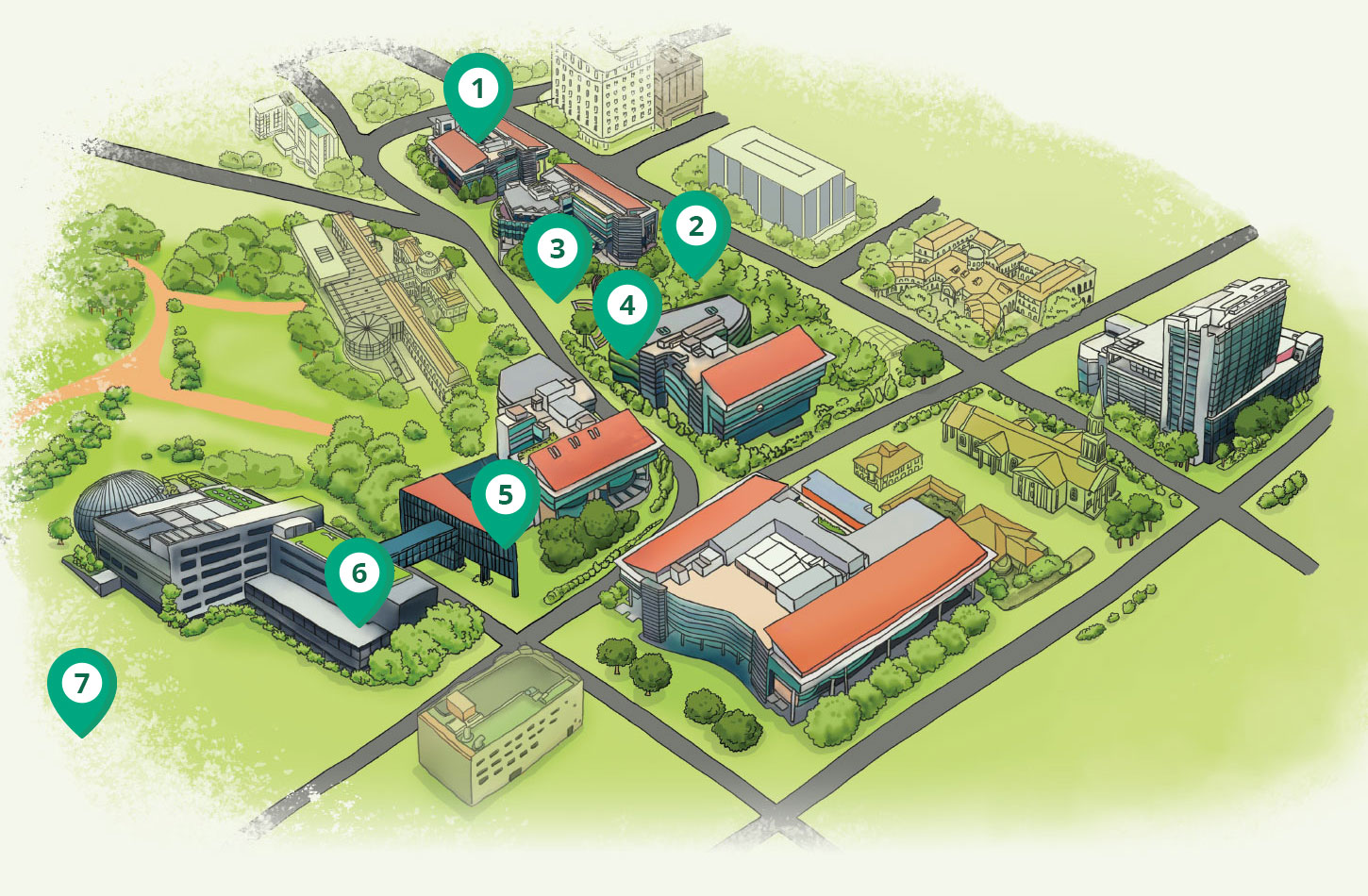
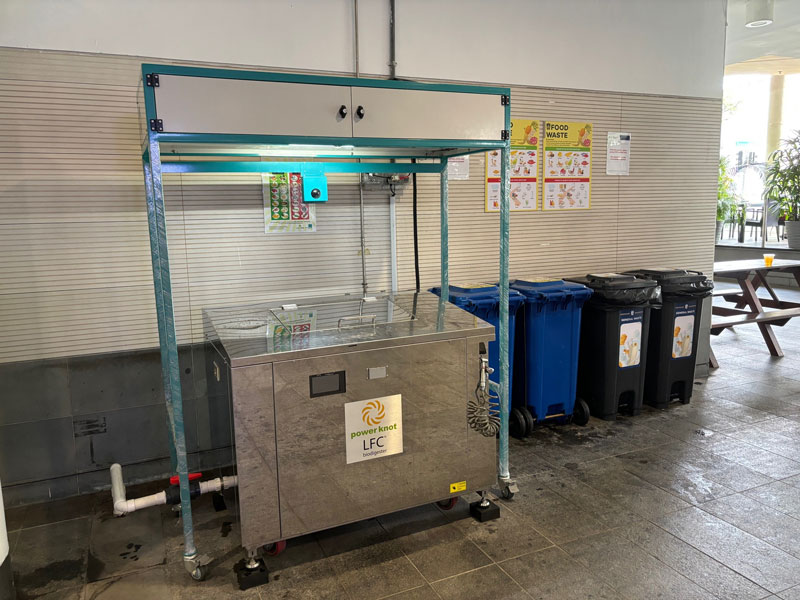
Our tour begins at the western end of our campus, at the foodcourt on the ground floor of the School of Economics and School of Computing and Information Systems building. Here, tenants and patrons can segregate and dispose of their food waste into the food segregation bins and food digester at the foodcourt. The biodigester can process most pre- and post-consumer food waste, converting it into grey water that can be safely discharged down the drain, and reducing energy required for waste disposal and treatment. 6 more biodigesters can be found across our campus. See if you can spot them as you take this tour!
Food is responsible for a third of global greenhouse gas emissions, yet in Singapore, where over 90% of our food supply is imported, more than 2,000 tonnes of food is wasted every day. On campus, apart from treating food waste, Project Midori, a student-led community service group, also conducts regular campaigns to promote sustainable food habits and reduce food wastage at source.
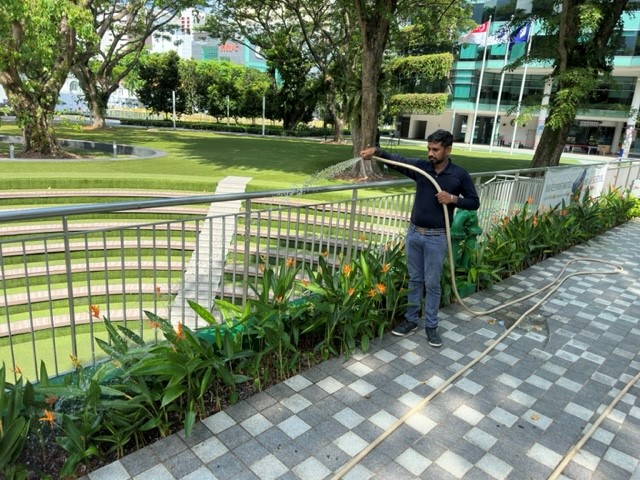
Singapore is one of the most water-stressed countries in the world with global warming expected to exacerbate water security challenges as rainfall patterns become more unpredicatable, and extreme rainfall events and droughts occur more frequently. Sited within a flood-prone urban area, our campus is even more vulnerable to flash floods that can occur as a result of torrential downpours.
A rainwater harvesting system with 2 large underground tanks was constructed at Campus Green to collect stormwater runoff and prevent flash floods. In recent years this system has also been adapted to enable the water to be used for watering the beautiful greenery you see on campus. Condensate from air-conditioning systems is also collected and reused for landscape irrigation.
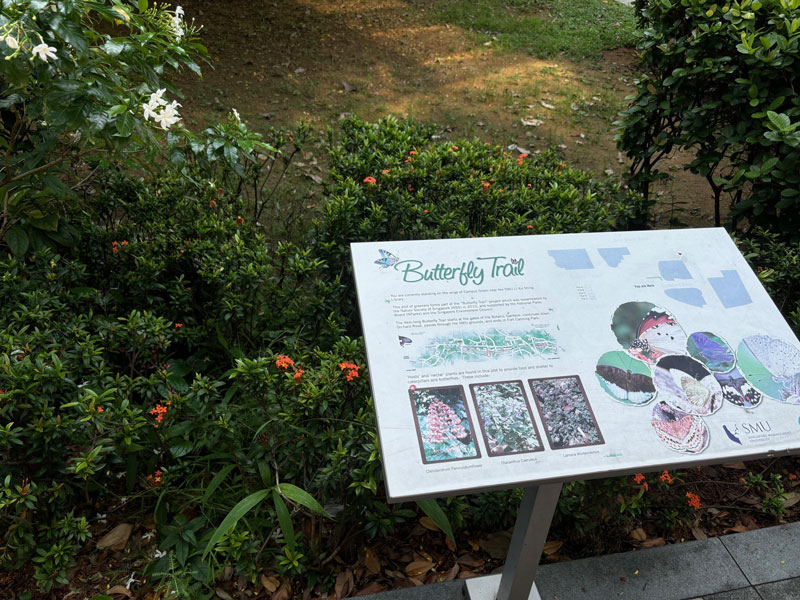
Did you know that more than 400 native butterfly species have been recorded in Singapore but more than a third are thought to be locally extinct now? Butterflies are one of the most vulnerable organism groups to climate and environmental changes. The Cities Biodiversity Index includes the change in the number of (living) native butterfly species as a key indicator of urban biodiversity.
You can spot butterfly host and nectar plants in pockets around the grounds of the Li Ka Shing Library building. These were planted as part of the 4km Butterfly Trail @ Orchard, meandering between the Singapore Botanic Gardens and Fort Canning Park. The trail features some 50 of the more common butterfly species that are found in Singapore. If you're lucky, you might spot Singapore's national butterfly, the Common Rose butterfly, here! You can also sign up to the NParks Butterfly Watch, a citizen science programme for those who enjoy butterfly watching.
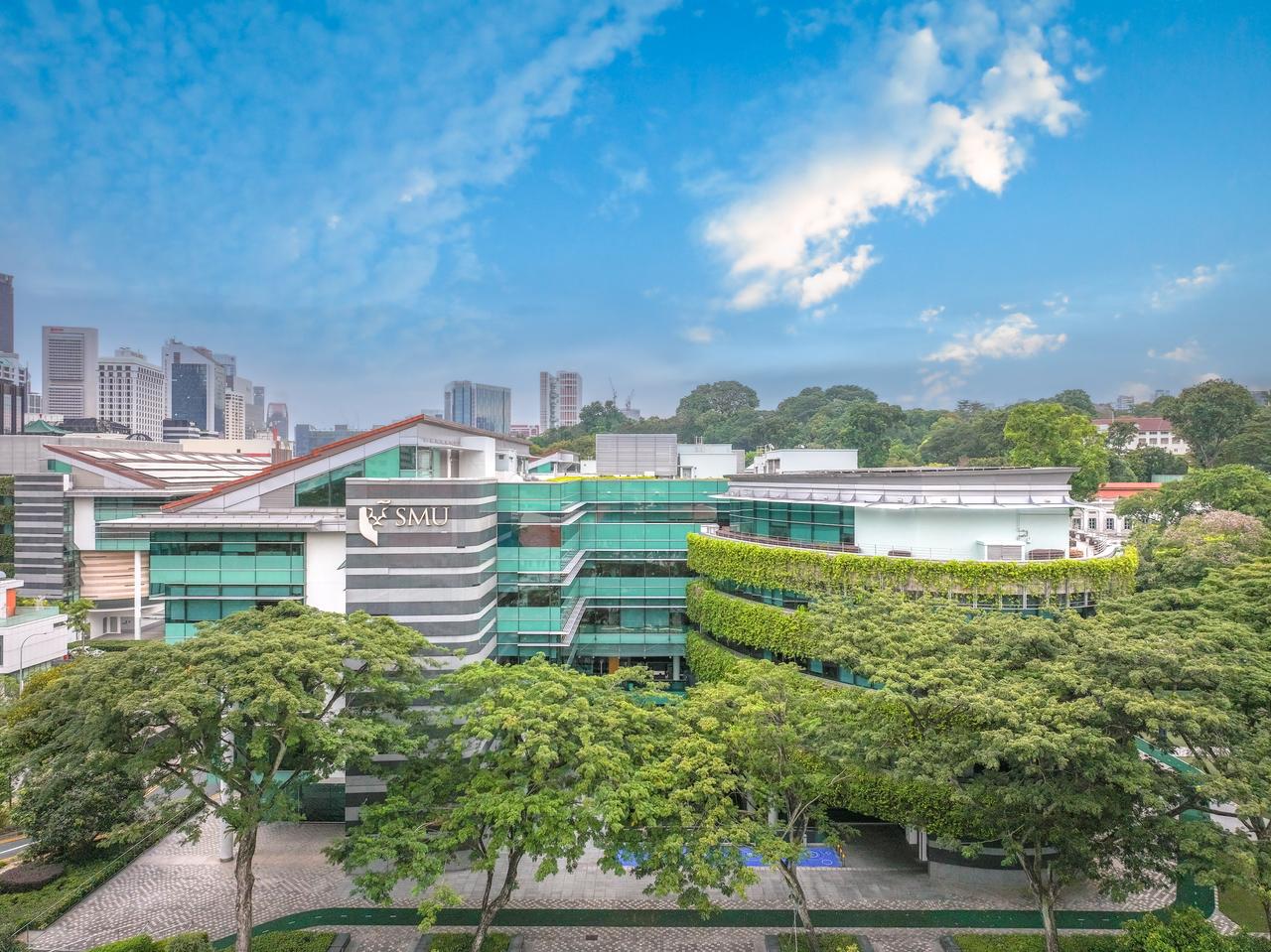
Feeling the heat? Singapore, like the rest of the world, has been experiencing rising temperatures, more frequent heatwaves and extreme heat due to climate change. As a tropical city, Singapore is further impacted by the Urban Heat Island effect which is more pronounced in Singapore's city centre where our campus is located.
Large parts of the Li Ka Shing Library building are shaded by lush vertical gardens, which can also be found on the facades of other buildings on campus. These green walls are a prominent design feature of our campus, helping to reduce the urban heat island effect and energy demand for interior space cooling as they provide cover shading and contribute to lower ambient temperatures. Beyond the green walls, our campus was also designed to have buildings which are porous at the ground level, and criss-crossed by breezeways and overhanging facades to maximise thermal comfort.
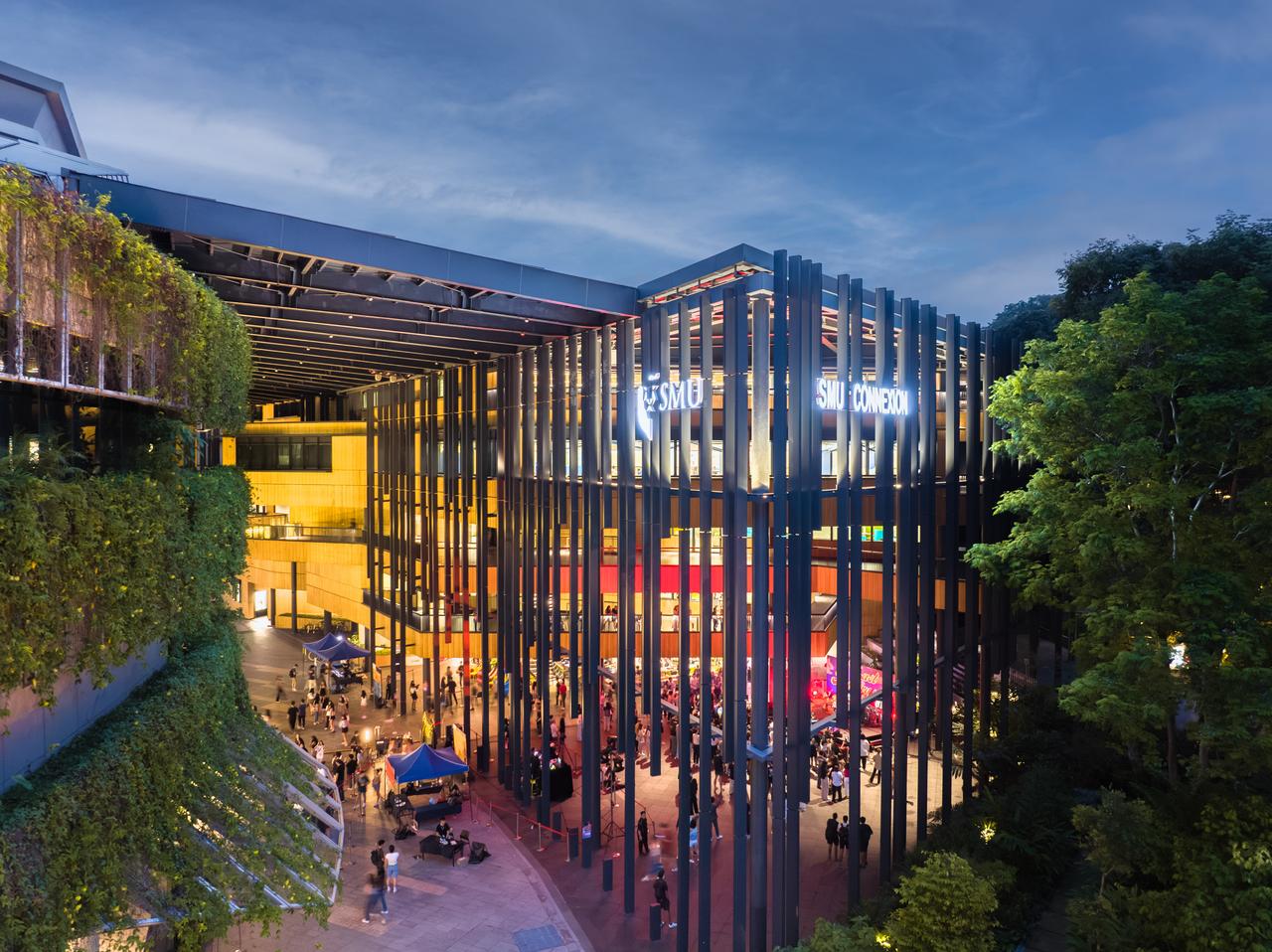
SMU Connexion is the first net zero building in the city centre, contributing to Singapore's drive to decarbonise the building sector, which is responsible for more than one-third of Singapore's total electricity consumption. This iconic building pushed the boundaries of environmental design and has won numerous awards for its innovative design and use of cutting-edge construction technologies.
Sited on a triangular plot at the foot of the Fort Canning Hill, SMU Connexion is the first building in Singapore to use a hybrid Steel-Cross Laminated Timber floor system and the first Mass Engineered Timber building in the city centre. The extensive use of sustainably sourced timber instead of concrete or steel for the building structure, combined with other passive and active design strategies as well as rooftop solar generation, have resulted in a building with much lower lifetime carbon emissions compared to traditional buildings.
Designed to support the SMU-X pedagogy which focuses on experiential learning through real-world projects, SMU Connexion is also home to the Greenhouse, the hub of SMU's innovation and entrepreneurship community.
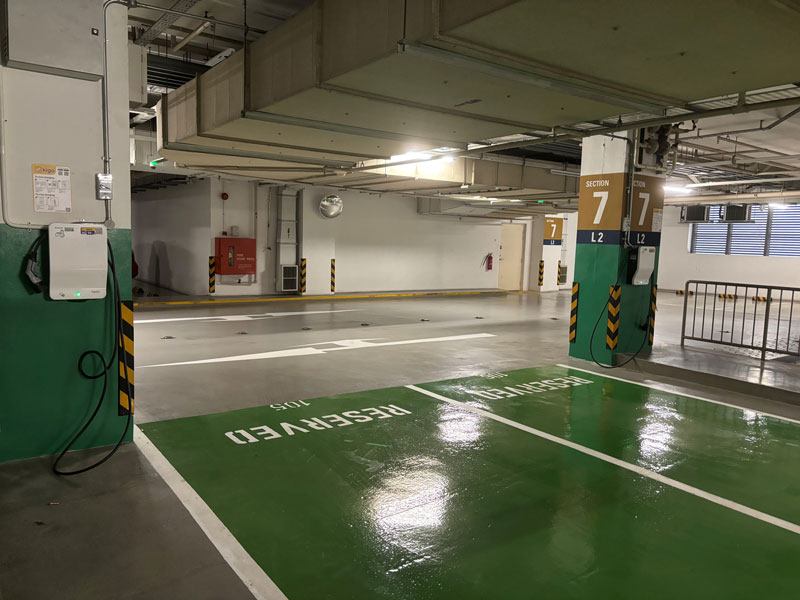
Singapore aims to convert all public and private transport to electric vehicles and will phase out sales of internal combustion engine cars by 2030. To encourage our community to switch to electric cars and contribute to the electrification of transportation in Singapore, we have installed electric vehicle charging points at the carpark at Yong Pung How School of Law building and at the Administration building. All the charging stations are charged by on-site solar power and do not draw energy from the grid.
Even so, we continue to advocate for climate conscious travel, encouraging our communiity to commute to campus by public transport or cycling, and to commute within campus by walking or cycling. Bicycle parking spaces can also be found on the grounds of every building on campus.
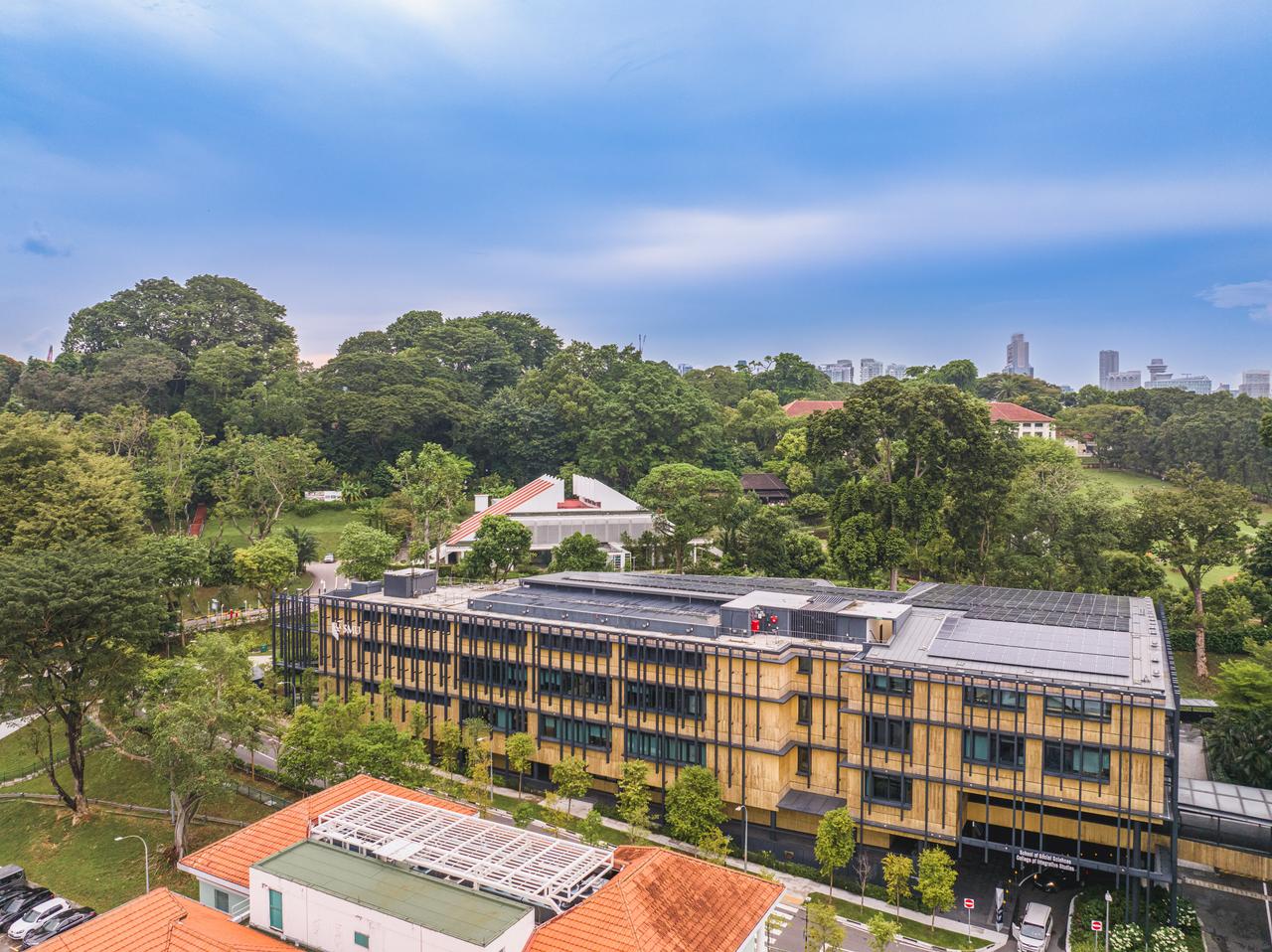
Singapore is one of the most solar-dense cities in the world, with solar panels found on rooftops, open fields, vacant lands and even reservoirs. Even so, SMU boasts the largest solar farm in Singapore's city centre, generating approximately 10-11% of our energy needs, and contributing to Singapore's solar energy targets in the Singapore Green Plan 2030.
Home to 2 schools, 4 research centres and a research lab, including the SMU Urban Institute, the Centre for Research on Successful Ageing, and the Lien Centre for Social Innovation, the School of Social Sciences and College of Integrative Studies building is a Green Mark Super Low Energy building and has the highest concentration of photovoltaic panels across our campus - 420 on its rooftop. Like SMU Connexion, the building also boasts green features such as Enhanced Passive Displacement Cooling, LED lighting and smart control, and converged power system.
Cultural Sustainability Campus Tour
Situated within Singapore's arts and heritage district of Bras Basah.Bugis (BBB) precinct, our campus plays an important role in the preservation and transmission of our heritage and cultural legacy. Discover tangible artefacts of our cultural heritage embedded in the fabric of our campus from landmark trees to artworks that reflect essential aspects of our multicultural society and history. Take the virtual tour below or put on your walking shoes for a self-guided walking tour.
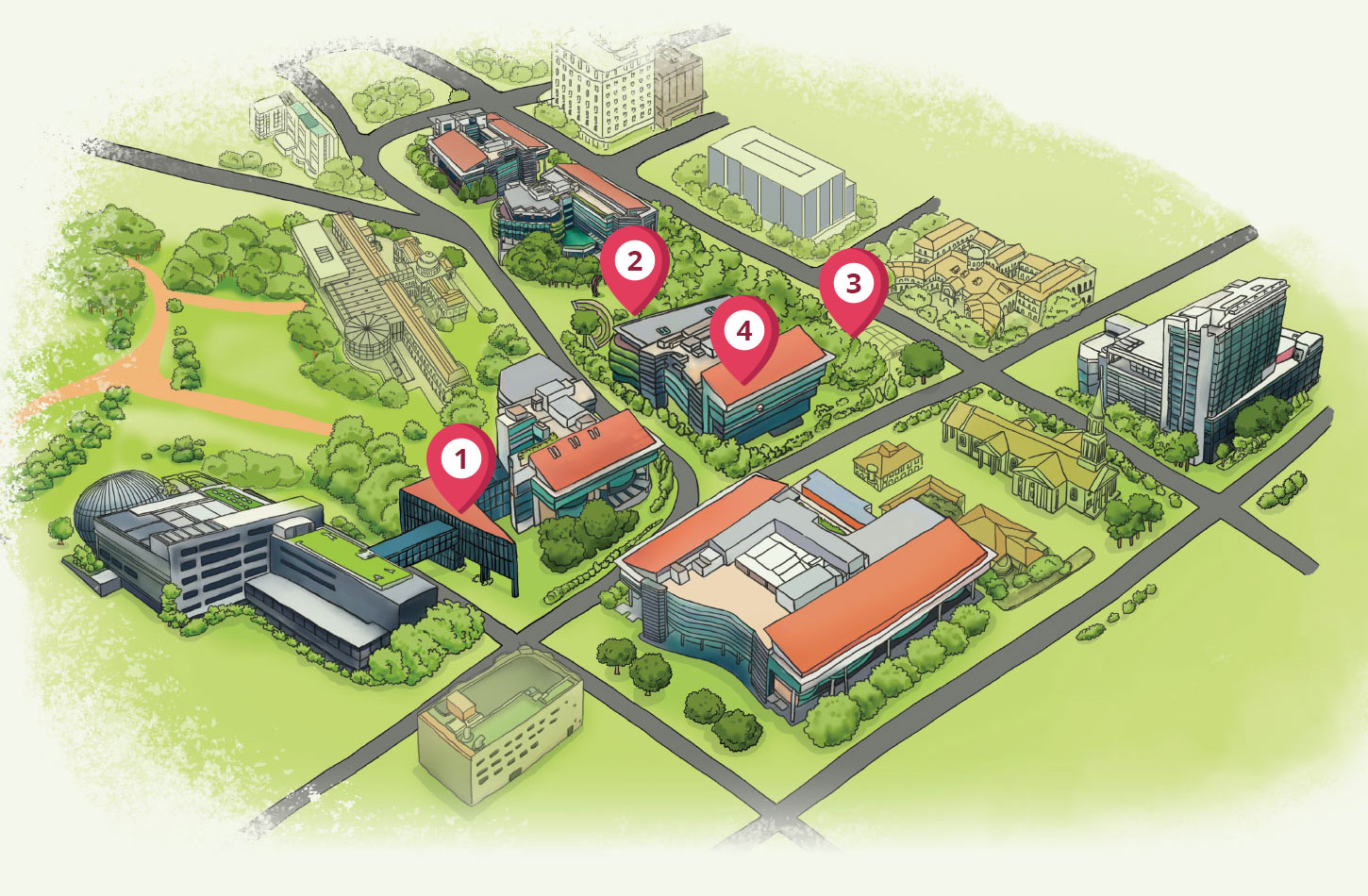
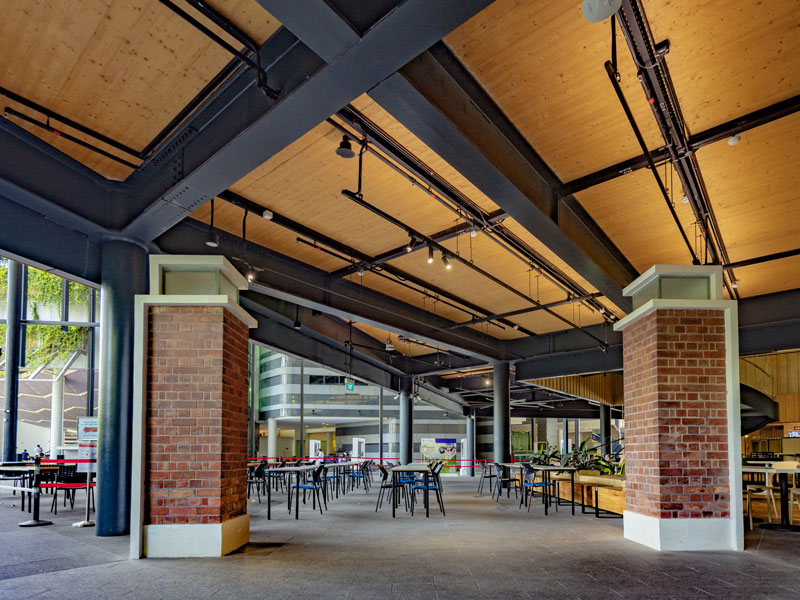
Our tour begins at SMU Connexion, next to the entrance to Fort Canning Hill. The building sits on land formerly occupied by the iconic red-bricked Old National Library building, which was demolised to enable better land use in the area and to ease traffic congestion. The Old National Library building was orginally completed in 1960 and had a reinforced concrete framed structure with brick walls that reflect the red-brick epoch of British architecture in the 1950s. It was a popular destination for many in Singapore for 40 years and is an important part of our collective memory.
You can find notable architectural elements of the building conserved and incorporated into our campus design - the buildings' historical red-brick entrance pillars and a part of the cast iron fence can be seen in their original position, next to the ground floor food court at SMU Connexion. A thousand red bricks have been also been preserved and integrated into the staircase wall leading down to the SMU Concourse from Campus Green. See if you can find it as you move to the second spot on this tour!
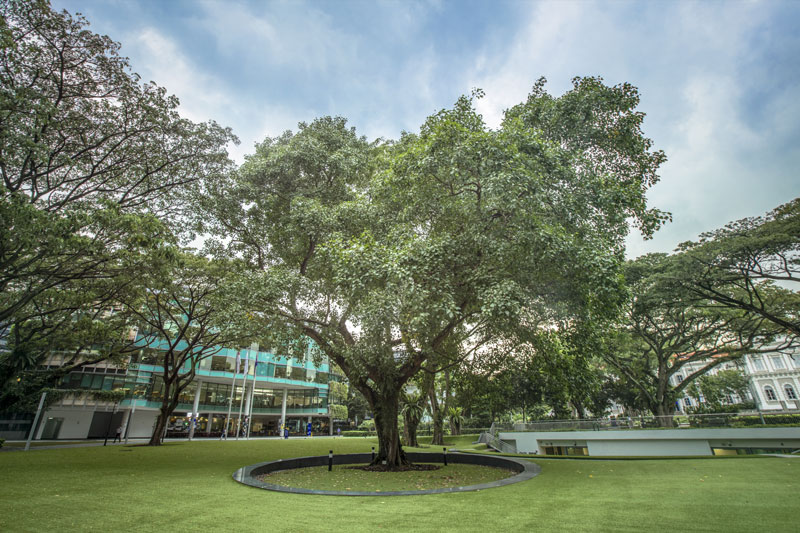
A venerable Bodhi Tree, believed to have been planted in the 19th century by a prisoner of the old Bras Basah convict jail, was conserved and transplanted into the current location on Campus Green during the construction of the SMU campus. The Bodhi Tree is sacred to Hindus and Buddhists as the Hindu god Vishnu was born under its shade and beneath this tree, the Buddha received his enlightenment. The tree is part of the 3km Civic District Tree Trail that starts at the Istana and ends at Raffles Landing Site.
Apart from the Bodhi Tree, more than 10 mature trees were also carefully uprooted and replanted. Among which was the biggest tree to be transplanted within Singapore's city district at that time - a 70-year-old, six-storey high, full-canopy raintree with a crown as wide as an Olympic-sized pool, and weighing as much as three fully loaded double-decker buses.
Most of our campus sits within the boundaries of Singapore's first Botanic Garden, which was established more than 2 centuries ago in 1822 by Sir Stamford Raffles. Nutmegs, cloves and cocoa were introduced and the Gardens served as a place of agricultural experimentation until it was closed 7 years later. It also became a popular sightseeing destination at that time.
The first Botanic Garden was recreated by the National Parks Board and winds around the perimeter of most of our campus. Species introduced to Singapore between the 1820s and 1840s, and that were grown in the first botanical and experimental garden, as well as species in historical records of Singapore and the region from the 1800s, were planted to restore the historical landscapes. As you walk along Bras Basah Road, from Campus Green to the next stop at the School of Computing and Information Systems 1 building, you will see signposts among the shrubs sharing details about the species planted and the history of the first Botanic Garden. If you have time, follow the signposts to learn more!

SMU houses a diverse and lively collection of contemporary art from Singapore and Southeast Asia, with over 270 artworks throughout the campus. There are 2 self-guided tours - the Public Art Trail and the Art on Campus Trail, with the latter only accessible to SMU students and employees with a valid staff pass. The Public Art Trail features 5 sculptures by renowned local and international artists and begins at the School of Computing and Information Systems. Completing this art trail will bring you back across Fort Canning Link to the Yong Pung How School of Law.
You can also take a guided tour with docents detailing stories about the artists, the artworks, and the history of SMU against the backdrop of little-seen spaces within the bustling campus. Tours range from one to two hours, and covers up to two collections. The two collections are the Chua Ek Kay’s Street Scenes Collection in the Lee Kong Chian School of Business, and the Thukhuma Collection of contemporary paintings from Myanmar in the School of Social Sciences and Li Ka Shing Library. Contact Kamiliah Bahdar from SMU Libraries at kamiliahb@smu.edu.sg for more details of the guide tour.